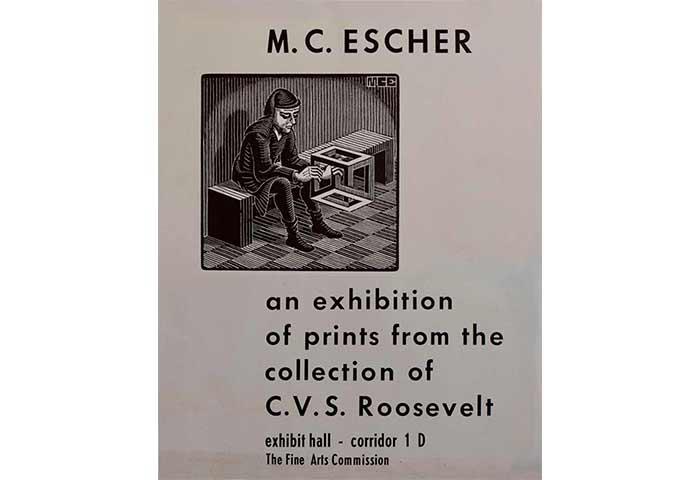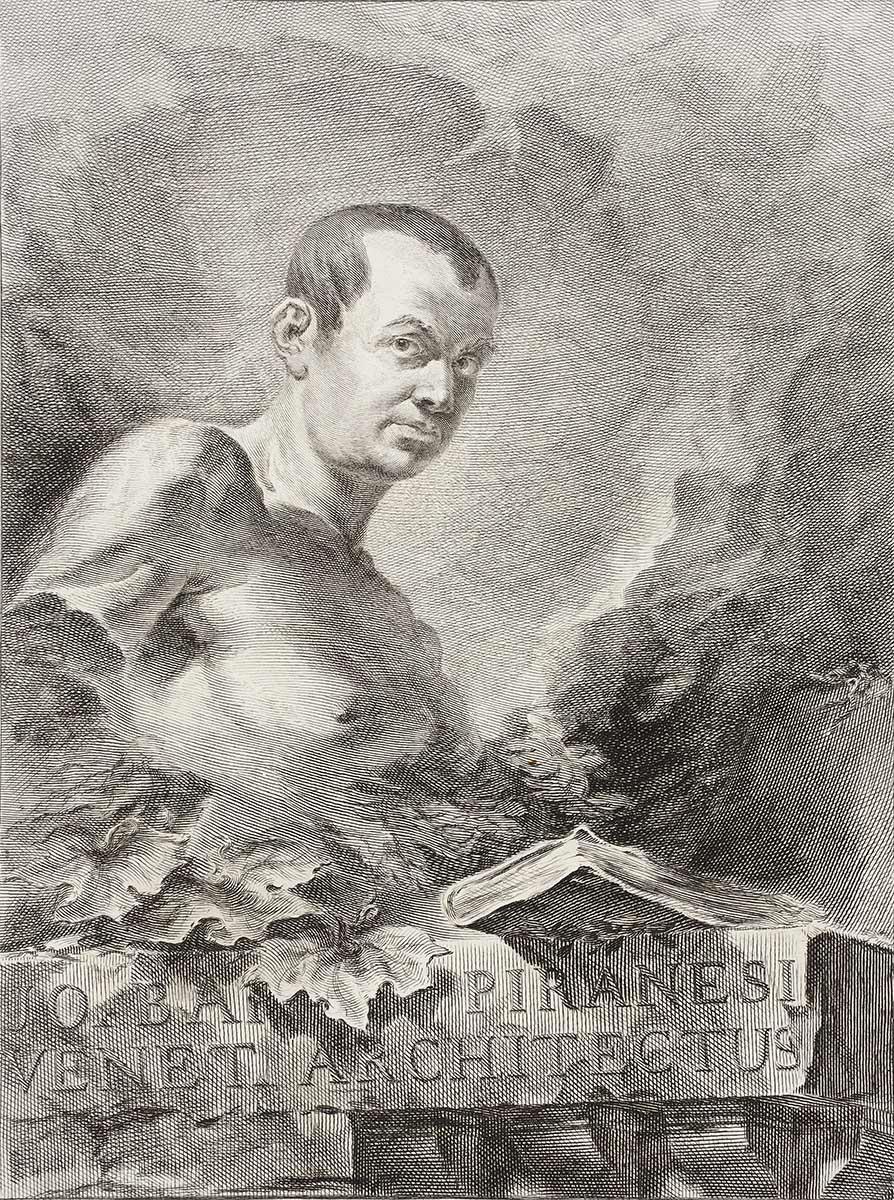

On his journeys through untouched parts of Italy in the spring and summer, enjoying himself was not Escher’s only aim. These hikes were also very much geared towards preparing for prints that they might inspire. During his travels, he took numerous photos which he pasted into a photo album, adding a note about them in his diary. They are memories of a beautiful journey, but in many of those photos, you can also recognise the landscapes that would go on to feature in his work. In the spring of 1930, Escher made a journey through the region of Calabria that proved very fertile. The tour took in such as Palizzi, Morano, Pentedatillo, Stilo, Scilla, Tropea, Santa Severina, Rocca Imperiale, and Rossano and yielded no less than 13 prints.
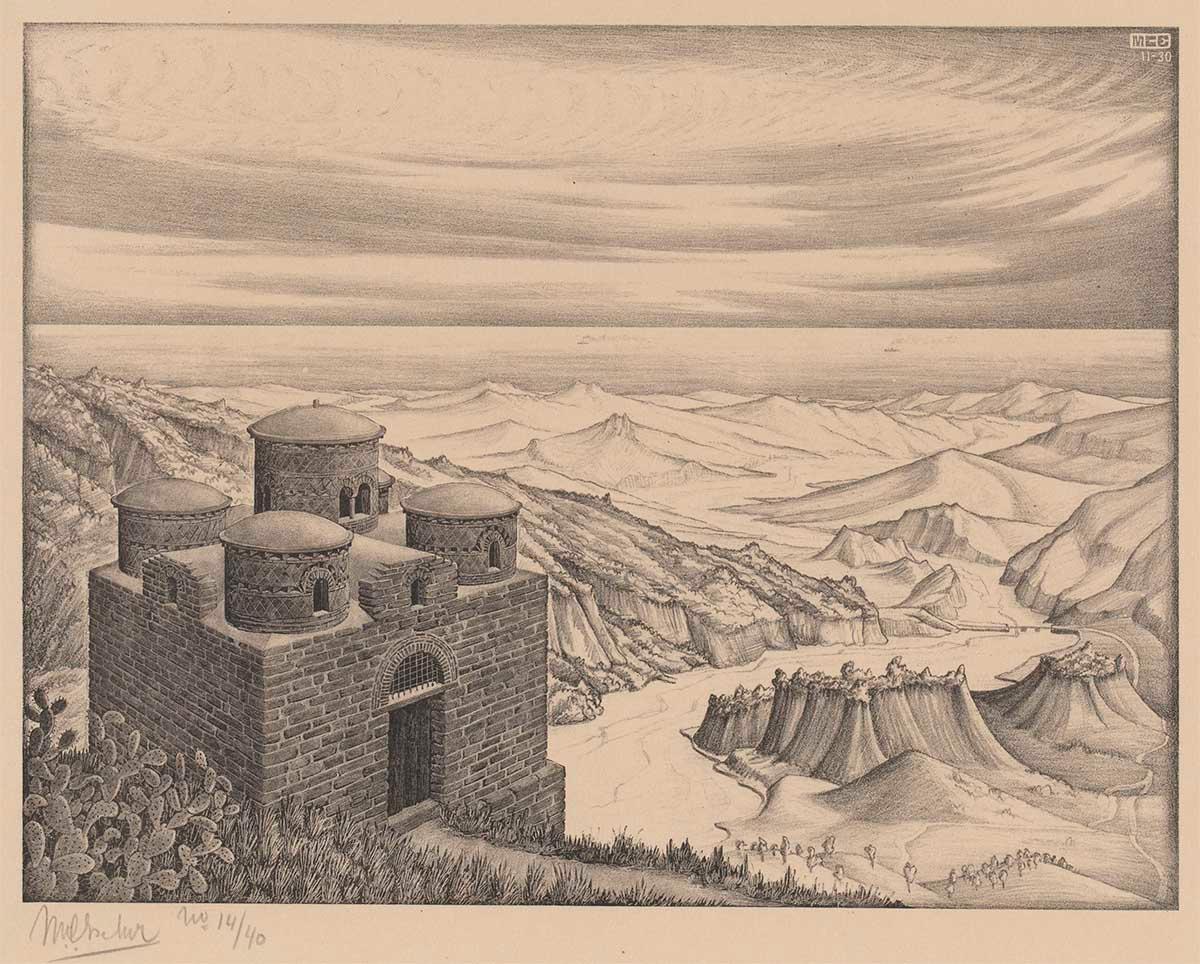
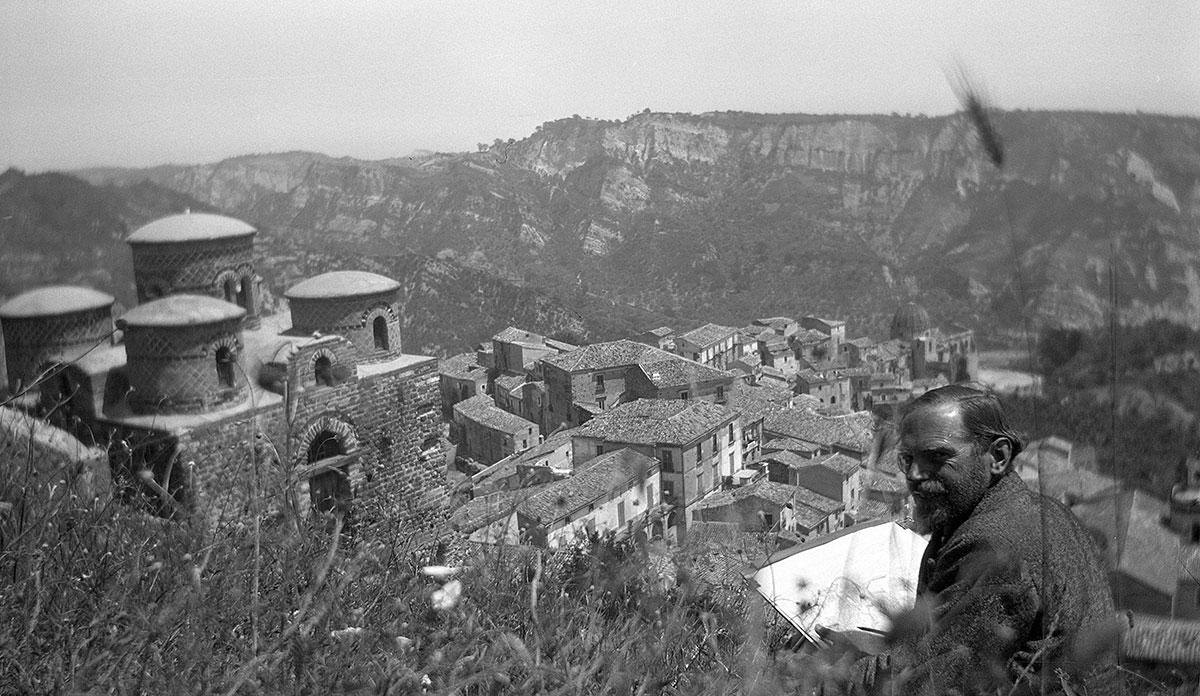
Although he created many of those prints from the same point of view as the photographs, a typical Escher characteristic is discernable in all of them. He almost always takes reality into his own hands. A good example is the Cattolica di Stilo. On 15 May 1930, he took a photo of his travelling companion Giuseppe Haas-Triverio, who sits in front of this Byzantine church. At first sight, there are many similarities with the print he created in November 1930. But if you take a closer look, you will notice some differences. The town of Stilo, which is clearly visible in the background in the photo, has completely disappeared. Escher replaced the houses with a fictional view, albeit one inspired by the local landscape. The white, crescent-shaped piece, for example, is a reference to a natural phenomenon that he himself had seen during his journey. It is a so-called 'fiumara', a wide riverbed that is almost dry for most of the year. The riverbed occasionally fills up to drain the surrounding mountains. This one, the 'Fiumara di Stilo', is located in the valley of the Stilaro, also known as the Byzantine valley. The landscape of pebbles also inspired Escher to produce the print Fiumara (of Stilo) and it recurs in his depiction of the Cattolica.


The Cattolica di Stilo is a small square brick church with a central plan, the roof of which consists of five distinctive domes. The church was built in the 10th century, when Calabria was part of the Byzantine Empire. It is one of the most important examples of Byzantine architecture in southern Italy, along with the similar Oratorio di San Marco in Rossano. The Cattolica is located at the foot of Mount Consolino in Stilo. The name 'Cattolica' was meant to indicate the category of 'privileged churches' and comes from the Greek word katholikì (καθολική). The Cattolica can be compared to a Greek cruciform church and is typical of the Middle Byzantine period. Inside, four columns divide the space into nine parts, each of which is approximately the same size. The central square area and the corner areas are covered with domes on columns of equal diameter. The central dome is slightly higher and has a larger diameter. On the east side, there are three apses. The inside of the Cattolica used to be completely decorated with frescoes. Parts of these frescoes have been preserved, including a representation of John the Baptist, Christ Pantocrator and Saint Nicholas, the Bishop of Myra.

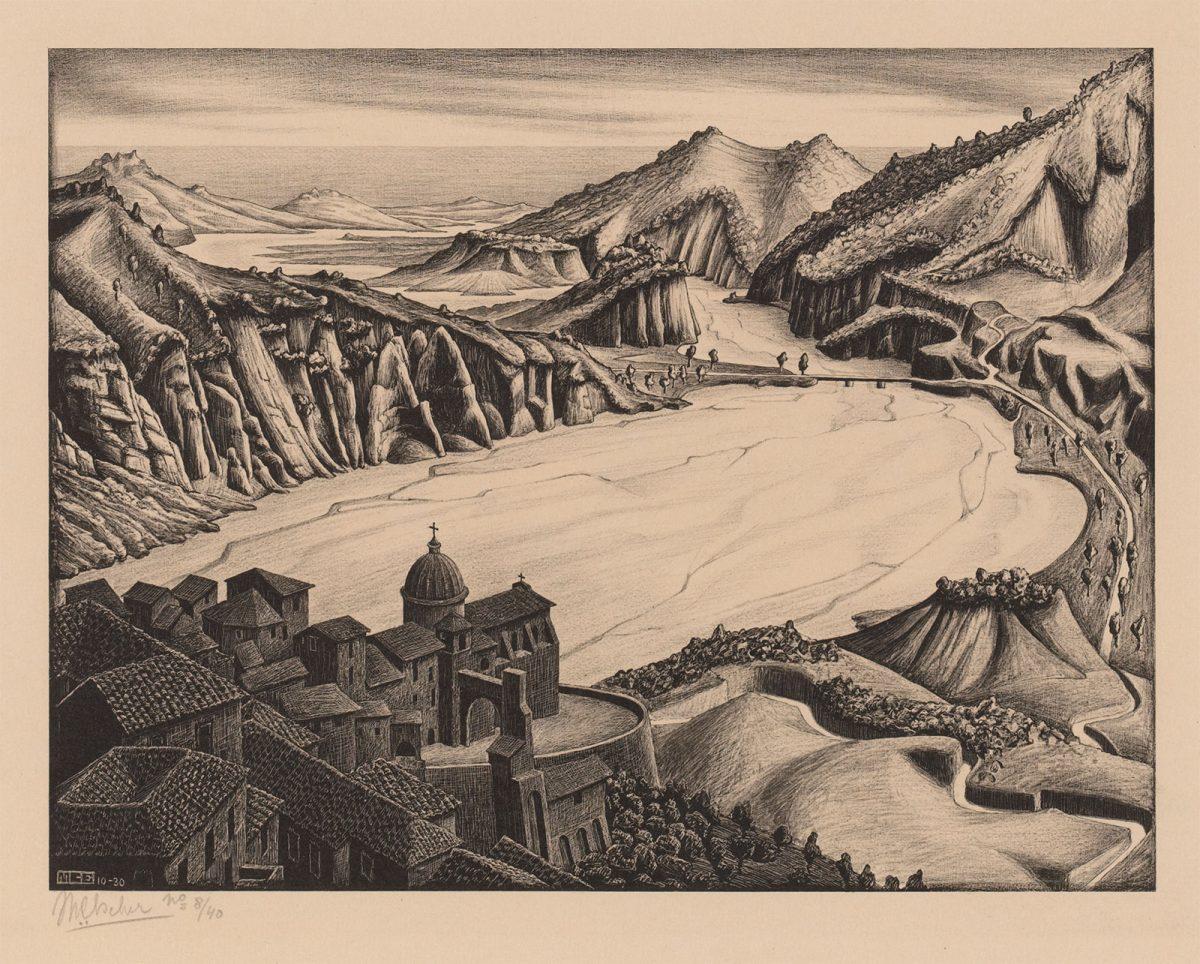

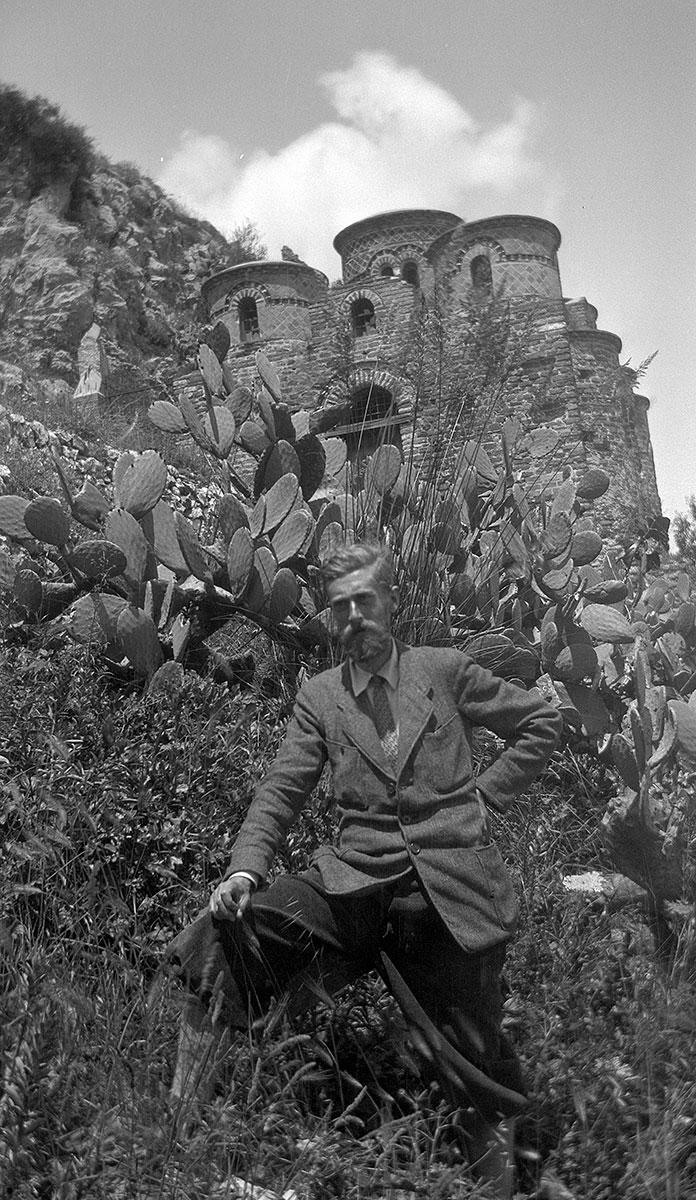
Map is loading...




More Escher today

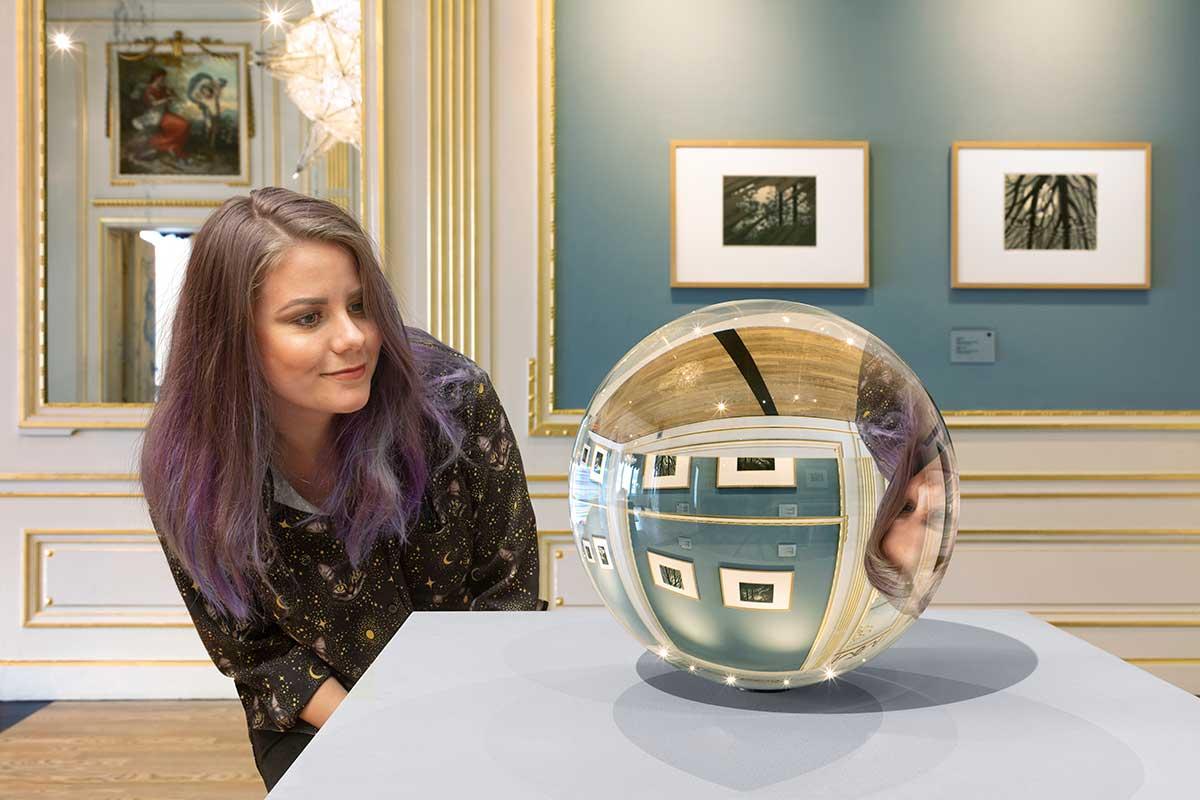
It was Glorious
